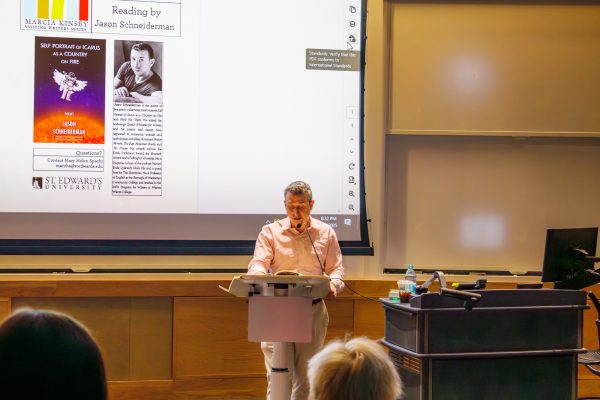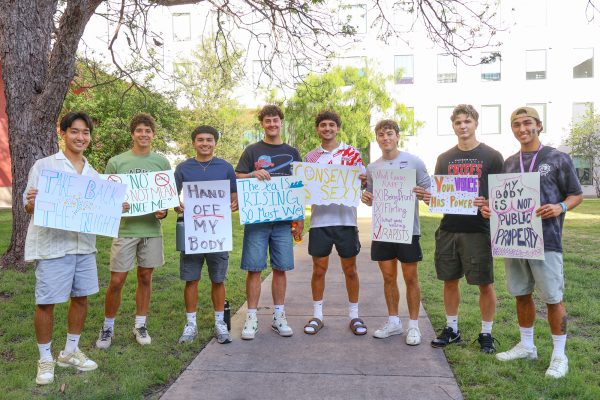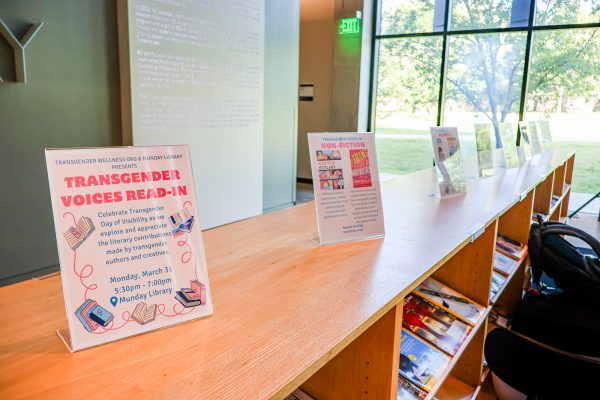‘Lady Bird’ kicks off Austin Film Festival with growing pains, bone sprains
Growing up and getting older is marked by various amounts of pain. Heartbreak, the end of friendships, and a loss of interest are just a few of the many hardships that litter the teenage years. From a memorable intro of tears shed for a cassette copy of “The Grapes of Wrath” to the shocking realization that a boyfriend, “Lady Bird” highlights the scattered nature of adolescence.
“Lady Bird,” written and directed by first time director Greta Gerwig, follows a young girl named Christine (Saoirse Ronan), who is floating through her senior year of high school. In an effort to distance herself from her overbearing mother, Christine adopts the name Lady Bird. The movies jumps from one event to another, following as Lady Bird fights with her mom (Laurie Metcalf), starts to take an active part in the school theater and decides to escape the wrath Sacramento.
The film is firmly set in the time of its setting, 2002, in an extremely intentional way. Reeling after the 9/11 terrorist attacks, and people suffering from the economic collapse, the world that these characters exist in is believable. The director’s choice of music cues, pop culture references and social conditions emphasize the overall narrative of the story.
Where the film’s script and editing take spotlight is the sequence of Lady Bird, her friend Julie (Beanie Feldstein), her boyfriend, Luke (Lucas Hedges) and the theater cast are eating dinner after their first show. The film cuts from the joy of companionship to the humor of Lady Bird needing to pee. This leads her to use the men’s room, where she catches her boyfriend making out with another guy. Another quick cut occurs and the audience is led to Lady Bird and Julie sitting in a car, crying as Dave Matthew belts from the radio. It is the perfect scene to represent the film. For every victory, another painful defeat lies ahead of the teenager.
What makes “Lady Bird” exceptional is its unique brand of comedic timing. Gerwig’s script manages to seamlessly blend deadpan performances with quick, rapid fire cuts from one joke to another. At some points the film begins to feel disjointed, but overall the film gives the impression of a realistic observation on life, rather than just a bland linear narrative.
“Lady Bird” exceeds all expectations of the American coming-of-age film. The film provides a realistic and heartfelt look on the ways in which people experience pain in the formative years of life. The film ends on a promising note, with Lady Bird shedding her chosen name, and starting to use Christine again. This indicates a shift of mind in the protagonist, whose come to realize the intense burden she put on her family.
The movie stays in touch with its realistic outlook, providing a short segment at the end of the film to give an insight into Christine’s college life in New York. Even though she’s made it to her desired local, something still isn’t right. This leads to Christine to examine her outlook on the conventions of family, and this is captured excellently through the parallel visual scenes of both mother and daughter driving the same route every day in Sacramento.
“Lady Bird” is an excellent examination of the growing pains of a teenage girl in the middle of nowhere, trapped by both society and the family. The film is a definite success for first time director, and if this freshman outing is an indicator for the track of Gerwig’s career then it’ll be an interesting one to watch out for.






